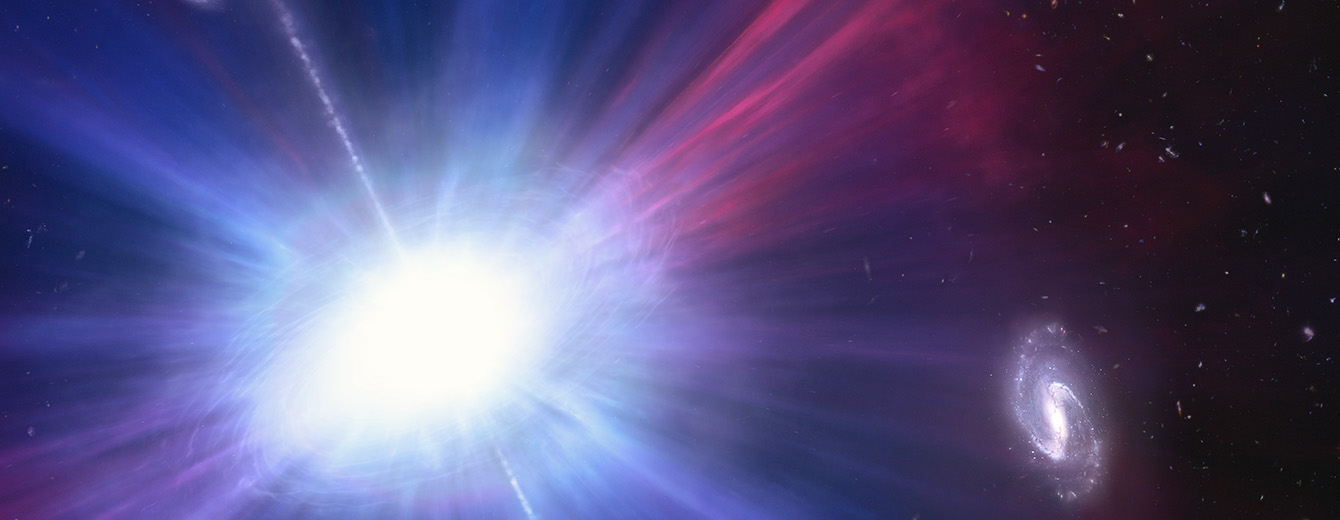Intriguing Bright Light Bursts Found Beyond Galaxies
In the vast expanse of the universe, strange and rare phenomena often leave astronomers both baffled and excited. One such phenomenon is the recently discovered “Luminous Fast Blue Optical Transient” (LFBOT), which has left scientists scratching their heads. To add to the mystery, this enigmatic burst of extraordinary brightness was found in an unexpected location—far from any host galaxy. It was the keen eye of NASA’s Hubble Space Telescope that pinpointed its location, but instead of providing clarity, the findings have deepened the mystery.
LFBOTs are among the most brilliant visible-light events in the cosmos, resembling unexpected camera flashbulbs going off in the darkness of space. Since the first discovery in 2018, only a handful of these events have been detected, occurring roughly once a year. These luminous bursts briefly illuminate the universe before fading away, leaving astronomers eager to understand their origins.
The most recent LFBOT, designated AT2023fhn and playfully named “the Finch,” followed the usual pattern. It blazed with intense blue light, evolving rapidly, reaching its peak brightness, and then dimming within days. This behavior sharply contrasts with supernovae, which take weeks or months to fade.
What makes the Finch particularly intriguing is its location—it resides between two neighboring galaxies, approximately 50,000 light-years from a spiral galaxy and 15,000 light-years from a smaller galaxy. This discovery defies previous knowledge of LFBOTs, as they were believed to be linked to core-collapse supernovae, which typically occur within star clusters in galaxy spiral arms.
Ashley Chrimes, the lead author of the Hubble paper reporting the discovery, noted that the Hubble observations were pivotal in revealing the Finch’s unusual location. Without this data, the uniqueness of the Finch would have remained unnoticed.
Previously, LFBOTs were associated with massive stars that explode as supernovae shortly after their formation in star clusters. These stars typically do not travel far from their birthplaces before erupting in brilliant fashion. However, the Finch challenges this understanding as it exists far from any known galaxy.
As researchers delve deeper into the enigma of LFBOTs, the puzzle only grows more complex. One possible explanation for the Finch’s distant location is the collision of two neutron stars, which, after billions of years spiraling toward each other, eventually merged. Such a collision results in a kilonova—a spectacular explosion roughly a thousand times more powerful than a standard nova. An even more speculative theory suggests that if one of the neutron stars was a highly magnetized “magnetar,” it could have amplified the explosion’s power to an extraordinary level, surpassing the brightness of a typical supernova by a factor of 100.
The discovery raises numerous questions, and researchers are eager to uncover the true nature of LFBOTs. While wide-field surveys have been essential in detecting these transient events, a larger sample size is needed to gain a more comprehensive understanding. Upcoming all-sky survey telescopes, like the ground-based Vera C. Rubin Observatory, may contribute significantly to this endeavor, depending on the underlying astrophysical mechanisms.
In conclusion, the universe continues to surprise and intrigue astronomers with phenomena like LFBOTs. As researchers gather more data and insights, we may one day unlock the secrets behind these extraordinary bursts of light that defy our current understanding of the cosmos.
Photo: NASA
For more info, please visit https://hubblesite.org/contents/news-releases/2023/news-2023-024





















